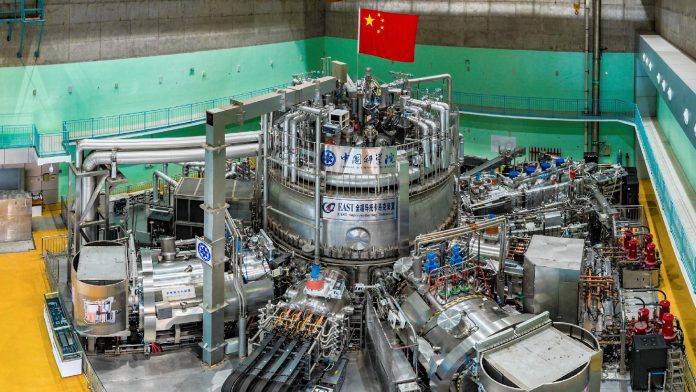China’s Experimental Advanced Superconducting Tokamak (EAST) project, also known as the “artificial sun,” set a new world record on April 12 by generating and maintaining extremely hot plasma for seven minutes. This project is based on nuclear fusion and provides an unlimited energy source for China without generating residual waste, unlike nuclear power plants that rely on nuclear fission.
Nuclear fusion involves forcing atomic nuclei together, releasing energy. The previous record was set by EAST in 2017, with a plasma maintenance time of 101 seconds.
China’s “artificial sun” project based on nuclear fusion broke a new record, generating extremely hot plasma for seven minutes, surpassing its previous record of 101 seconds set in 2017. The breakthrough was achieved after over 120,000 runs and represents a significant step towards developing highly effective and reasonably priced thermonuclear fusion reactors.
The goal of the project is to produce nuclear fusion similar to that of the Sun, offering a continual stream of clean energy using materials abundant in the sea.
The recent achievement is expected to serve as an experimental foundation for the International Thermonuclear Experimental Reactor’s operation and China’s independent development and operation of fusion reactors.
The breakthrough lies in the high confinement mode, which significantly boosted particle temperature and density, laying the groundwork for future fusion power plants to generate more electricity cheaply and efficiently, according to ASIPP director Song Yuntao.


